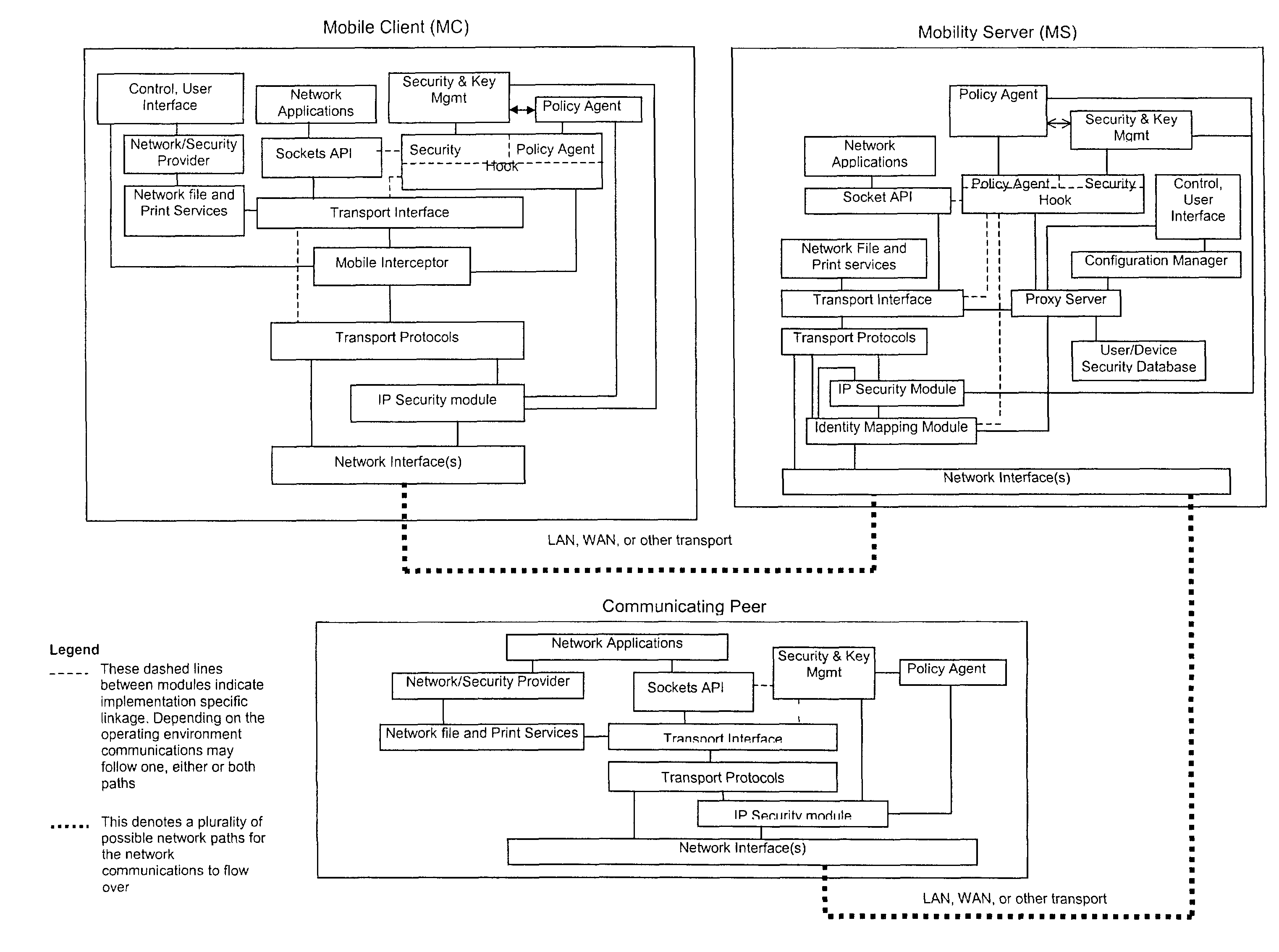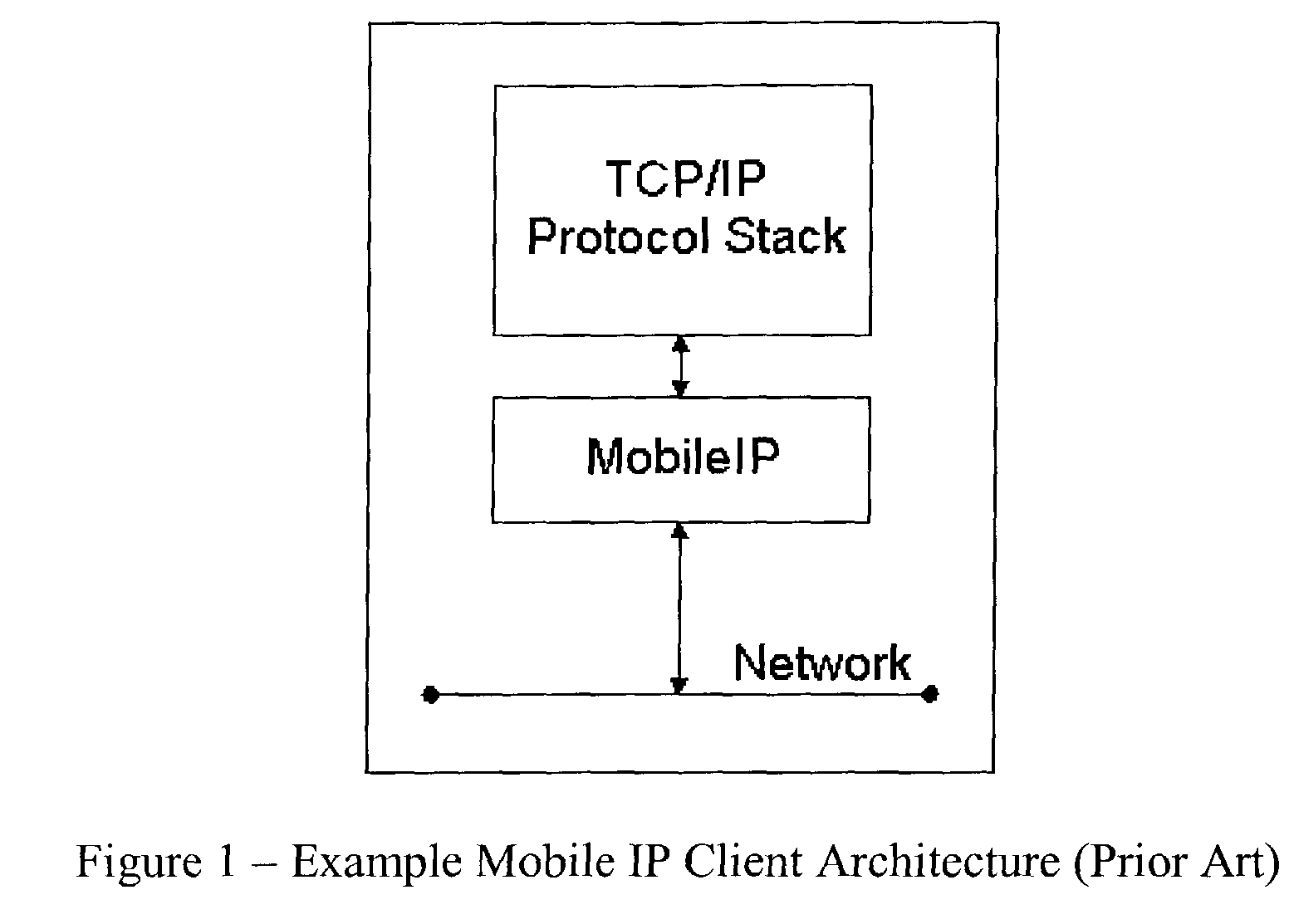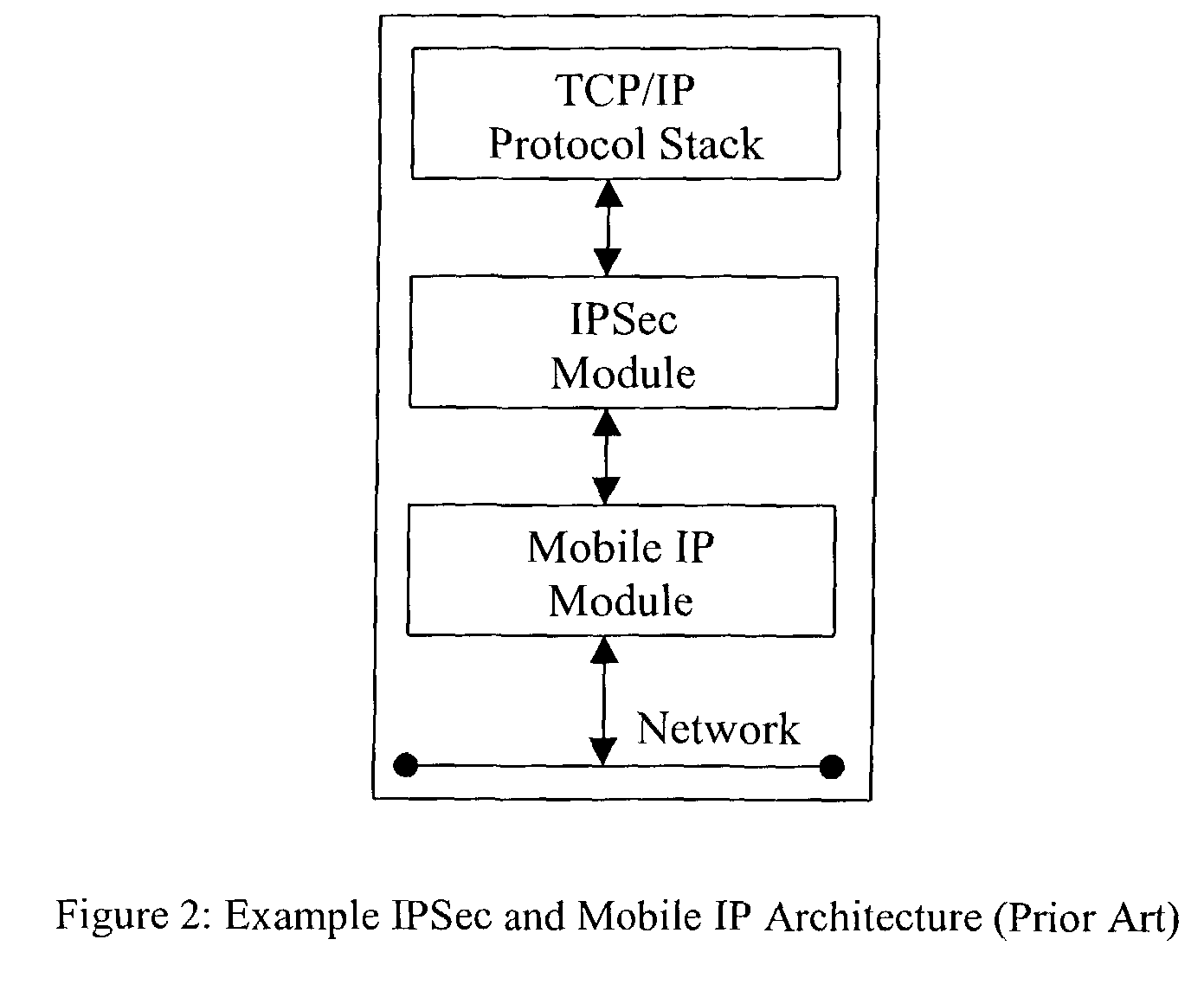A
wireless environment, in contrast, exhibits intermittent connections and has higher error rates over what is usually a narrower bandwidth.
As a result, applications and messaging protocols designed for the wired world don't always work in a
wireless environment.
Meeting these expectations creates a significant challenge to those who design and develop
wireless networking architectures,
software and devices.
Authenticating users and keeping communications confidential are more problematic in a
wireless network than they are in a wired network.
The information the network is carrying is therefore susceptible to
eavesdropping.
Further security threats and problems must be faced when users wish to use any of the ever-increasing variety of public wireless networks to access sensitive data and applications.
However, as explained below and as recognized throughout the industry, so far these standards have not provided a complete, easy-to-implement transparent
security solution for
mobile computing devices that roam between different networks or subnetworks.
One issue with this model is that once the intermediate WAP gateway decrypts the data, it is available in clear text form—presenting an opportunity for the end-to-end security of the
system to be compromised.
Without the correct key, the transmitted data cannot be decrypted—preventing other wireless devices from
eavesdropping.
However, a major limitation of WEP is that the protection it offers does not extend beyond the wireless link itself.
WEP generally offers no end-to-end protection once the data has been received by a
wireless access point and needs to be forwarded to some other network destination.
While
Mobile IP provides useful techniques for remote connectivity, it is not yet widely deployed / implemented.
For example, even though security is now fairly widely recognized as being a very important aspect of mobile networking, the security components of
Mobile IP are still mostly directed to a limited array of security problems such as redirection attacks.
While
Mobile IP provides a mechanism to prevent redirection attacks, there are other significant security threats that need to be addressed before an enterprise can feel comfortable with the security of their
wireless network solution.
For example, Mobile IP generally does not provide a comprehensive
security solution including
mobile computing capabilities such as:Session resilience / persistencePolicy managementDistributed firewall functionalityLocation based servicesPower managementOther capabilities.
The need for such modifications makes widespread implementation difficult and causes problems in terms of
maintainability and compatibility.
However, many or most VPNs do not let users roam between subnets or networks without “breaking” the secure tunnel.
Also, many or most VPNs do not permit transport, security and application sessions to remain established during
roaming.
Another potential stumbling block is conventional operating systems—not all of which are compatible with the protection of existing wireless VPNs.
However, Mobile IP, for example, operates at the
network layer and therefore does not generally provide for session persistence / resilience.
This can present severe problems in terms of
usability and productivity.
However, combining the Mobile IP and
IPSec algorithms in this manner can present its own set of problems.
If the
foreign agent is co-located with the mobile node, this can become a cumbersome operation.
However, this adds substantial additional overhead due to the additional encapsulation.
A drawback to this methodology is that it can increase the security risk by sharing credential information with a network entity that may not be directly under user or corporate administrative control.
 Login to View More
Login to View More  Login to View More
Login to View More 


